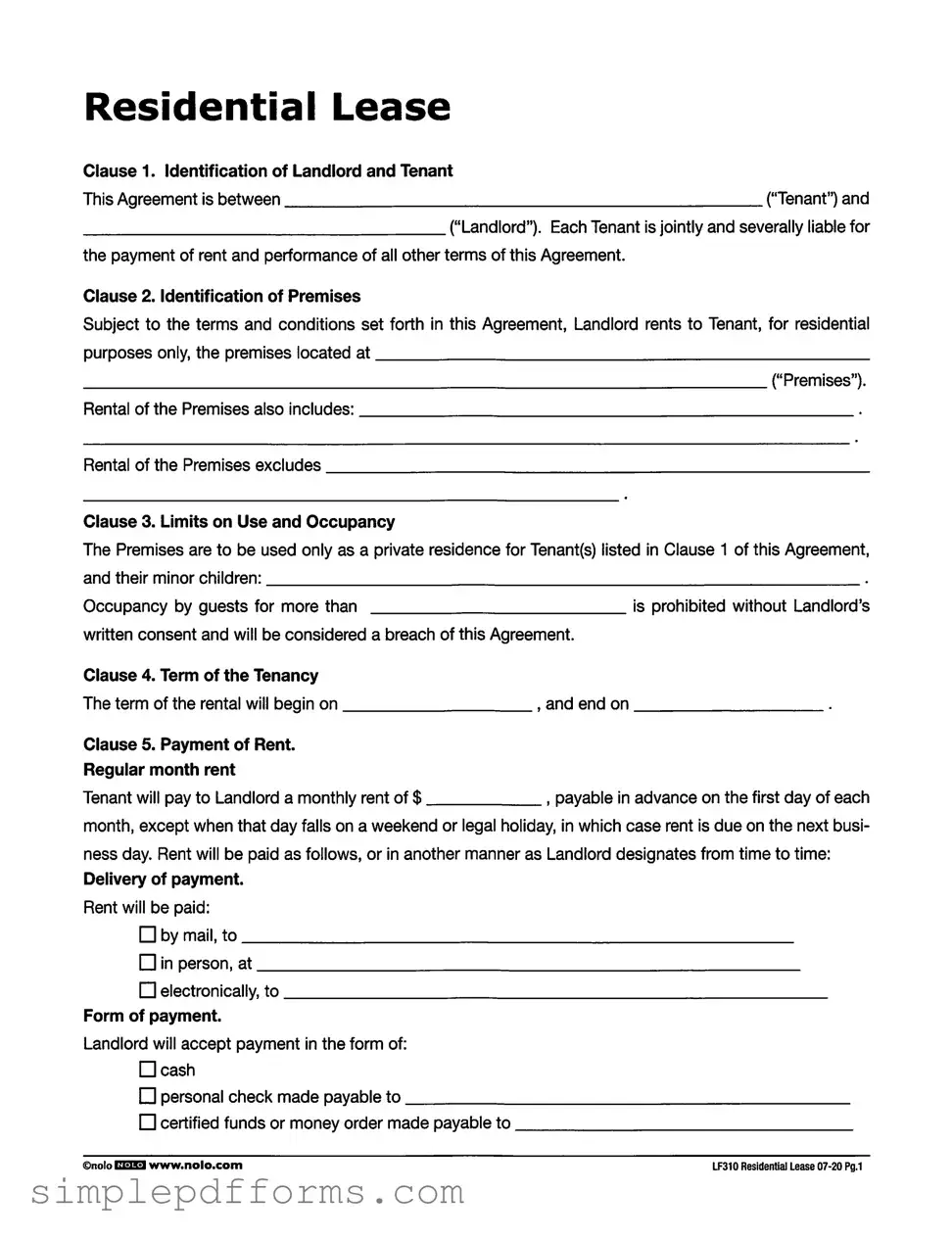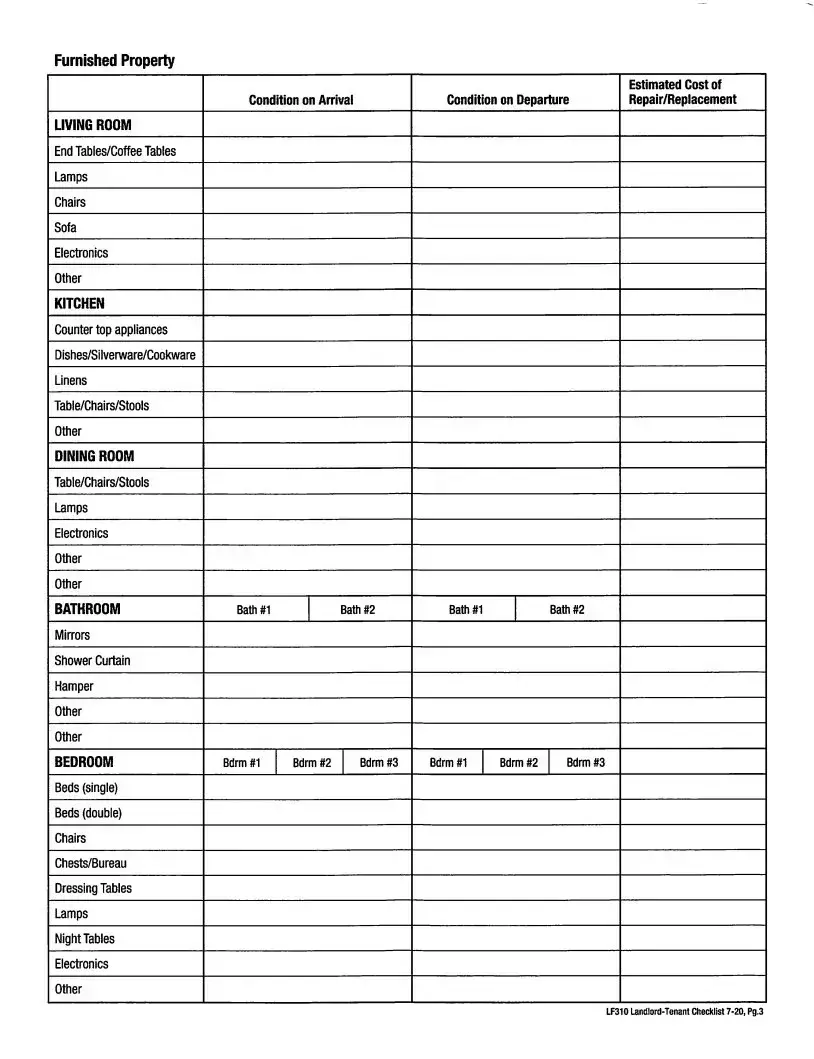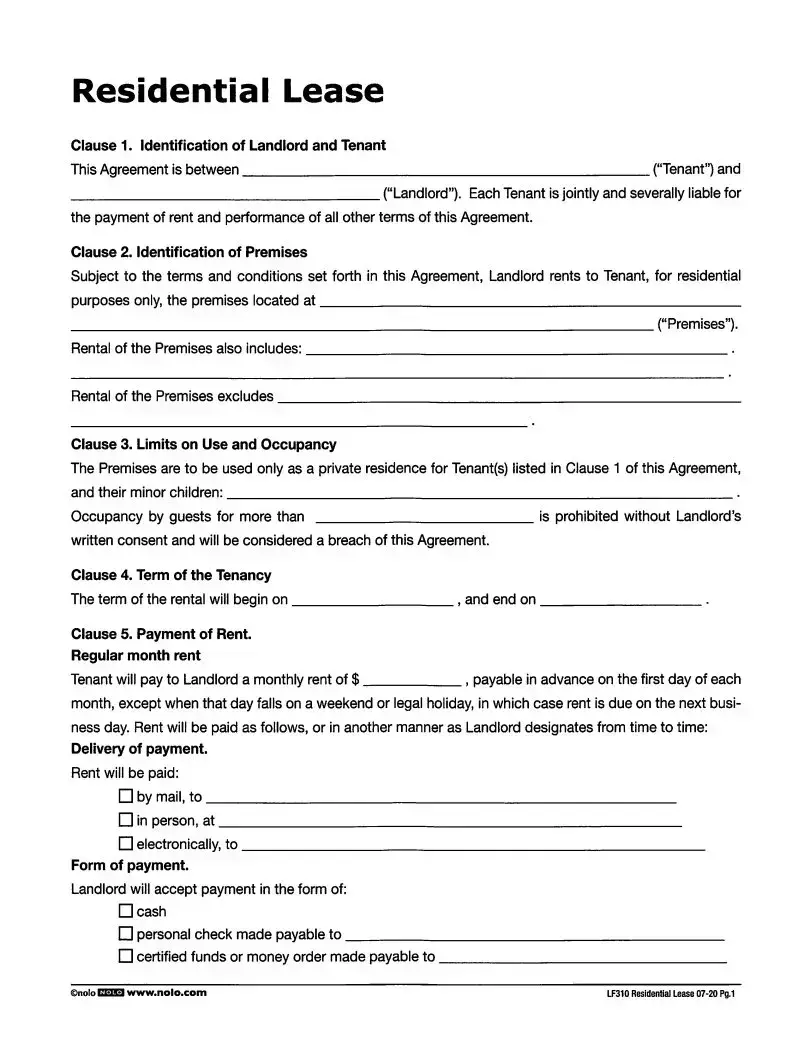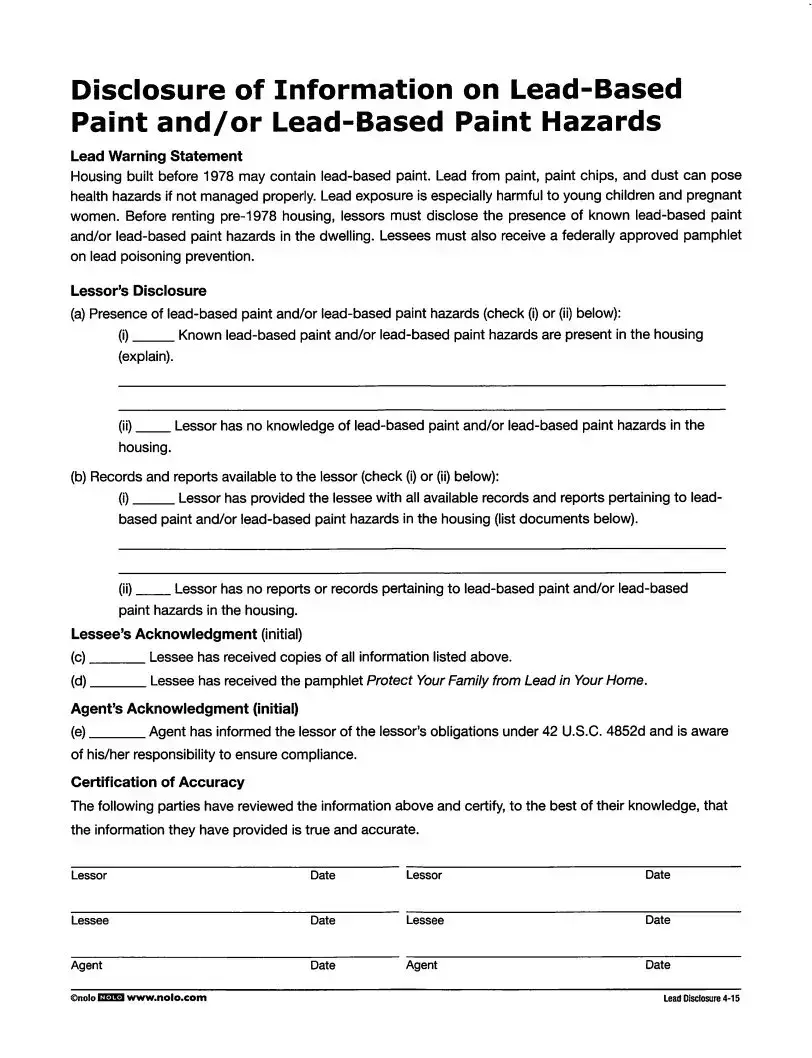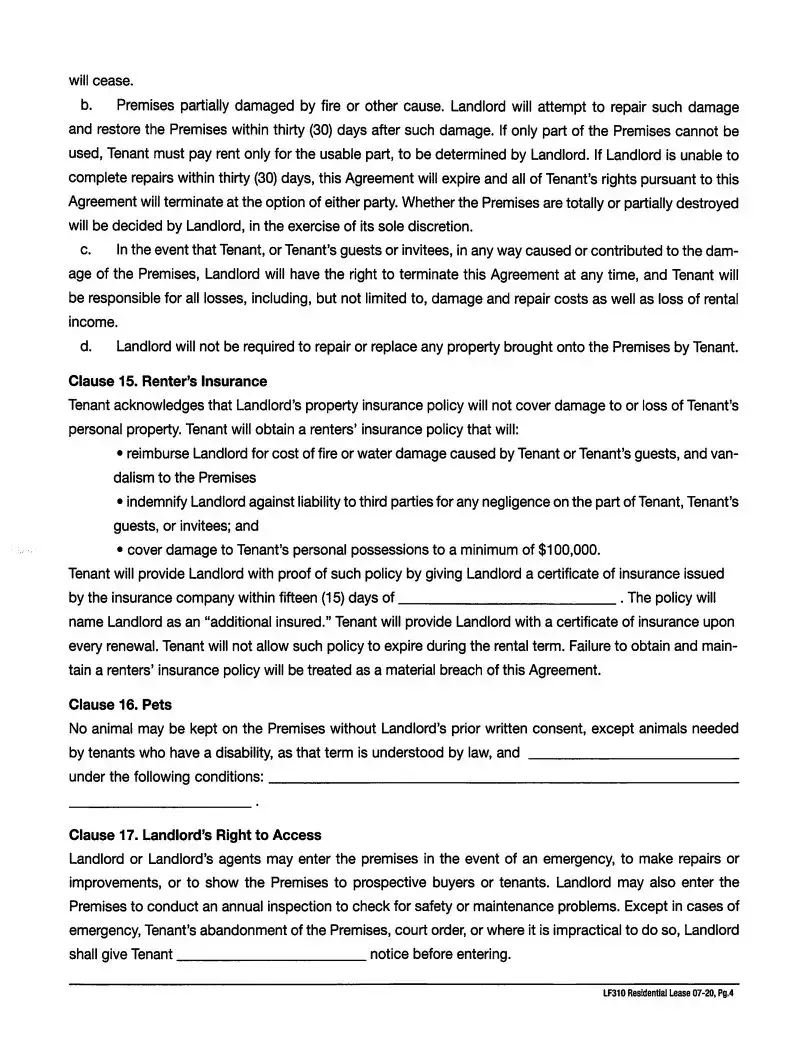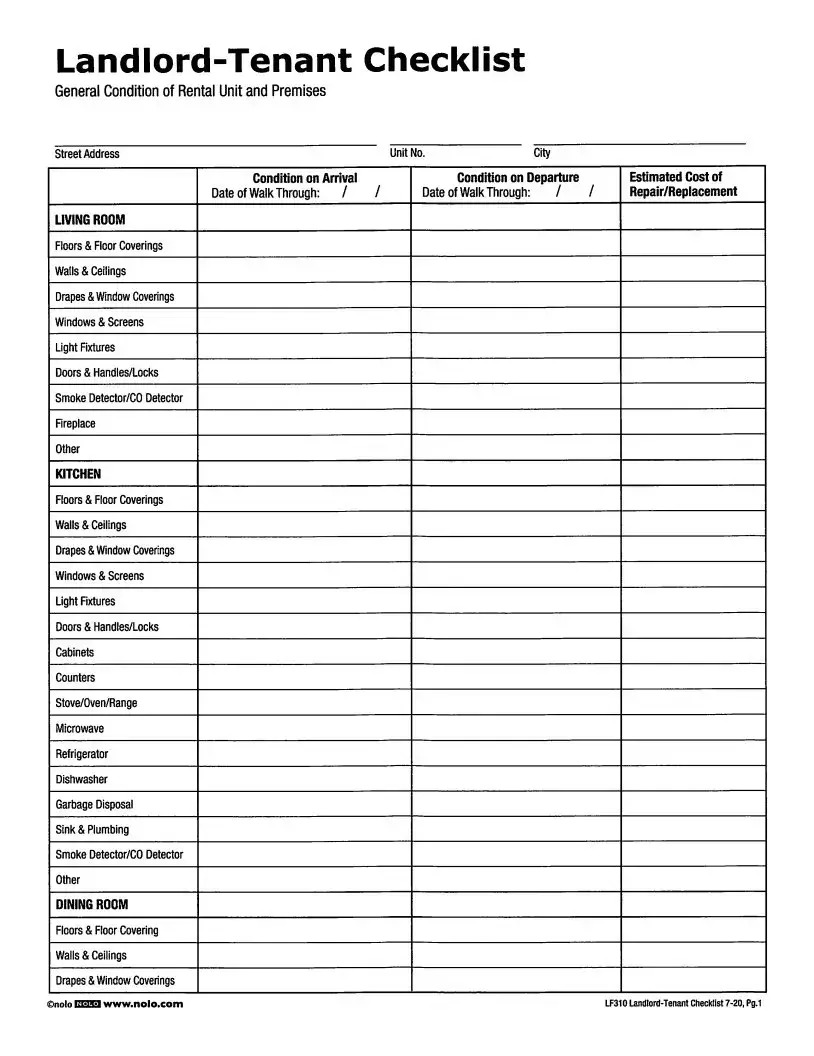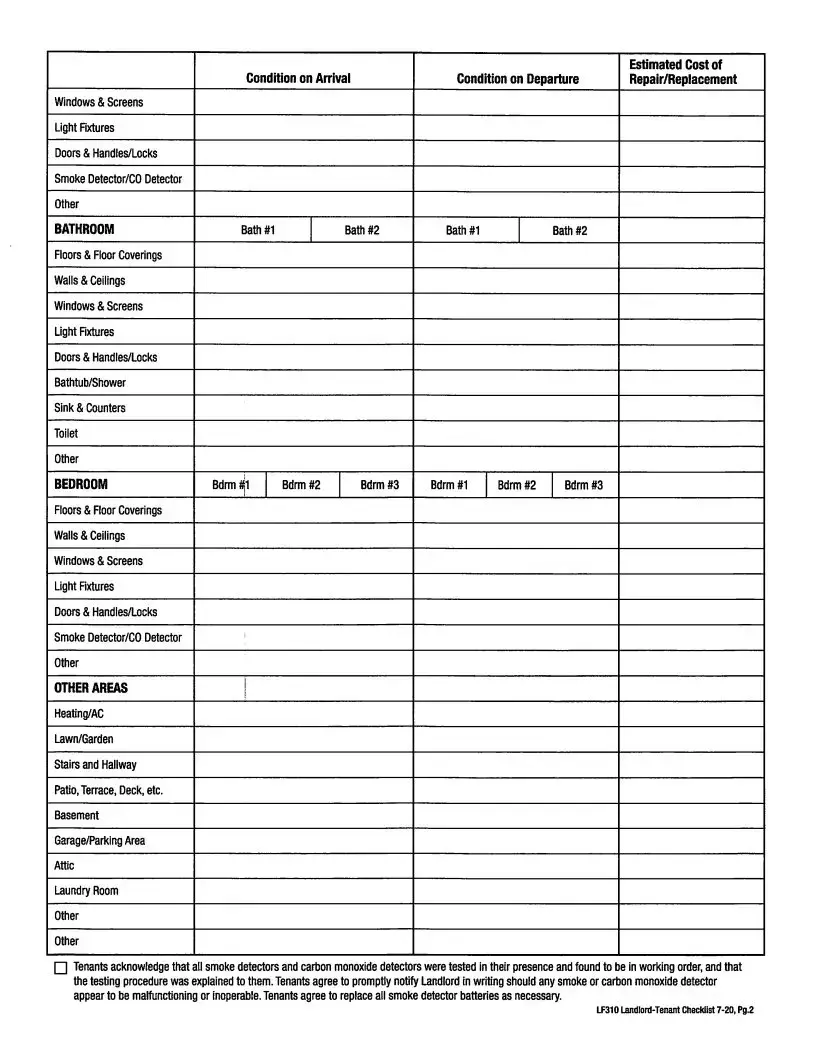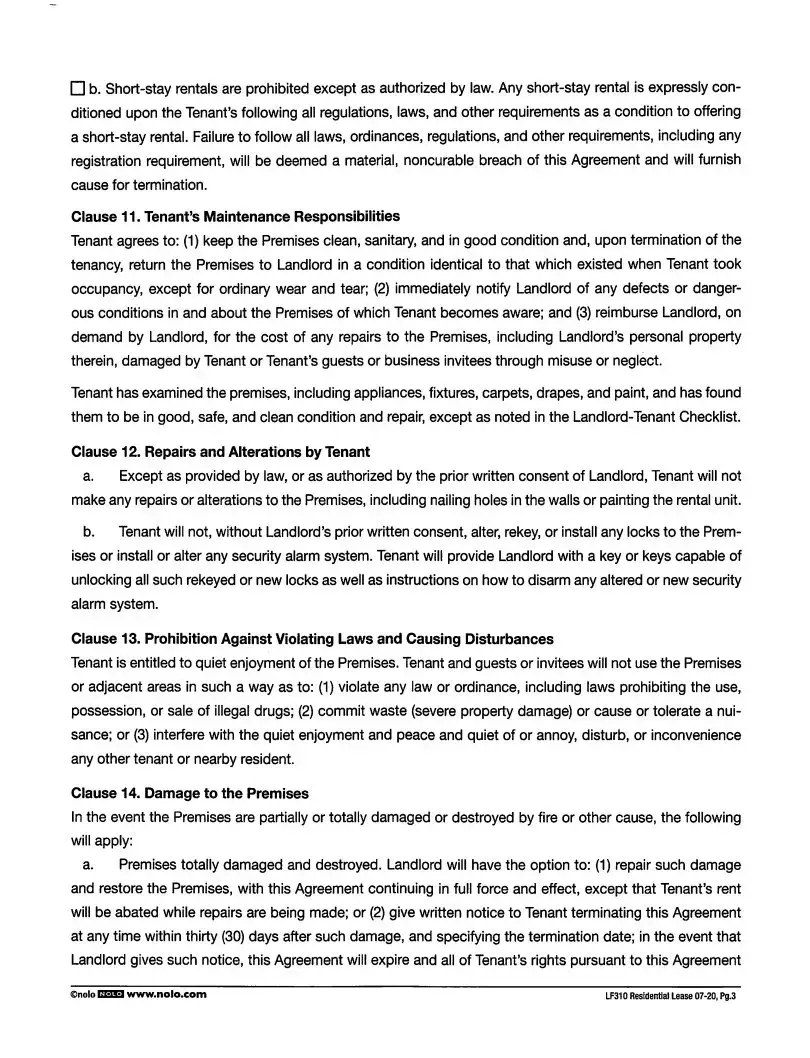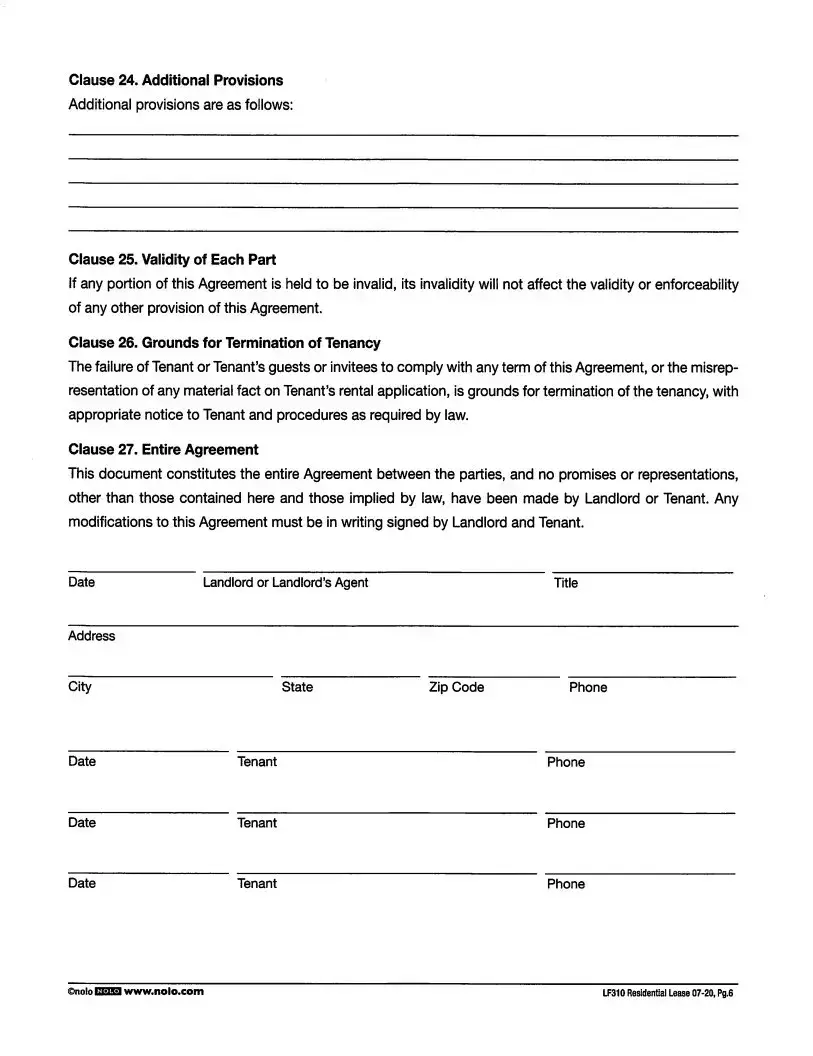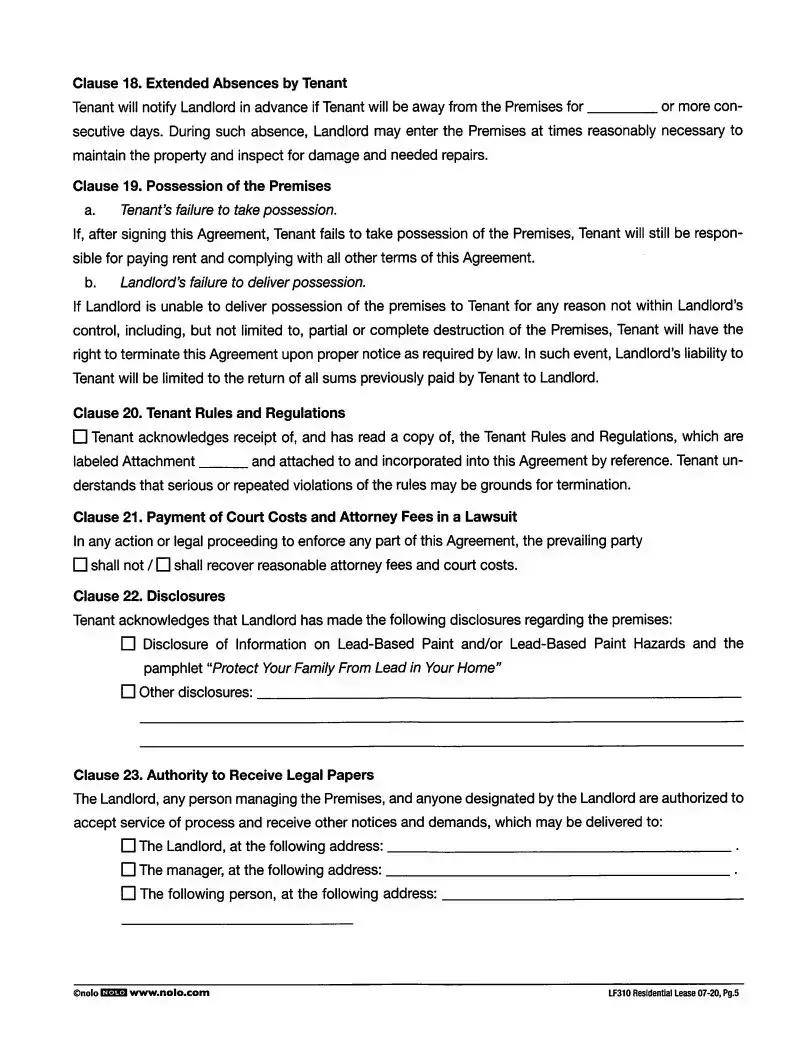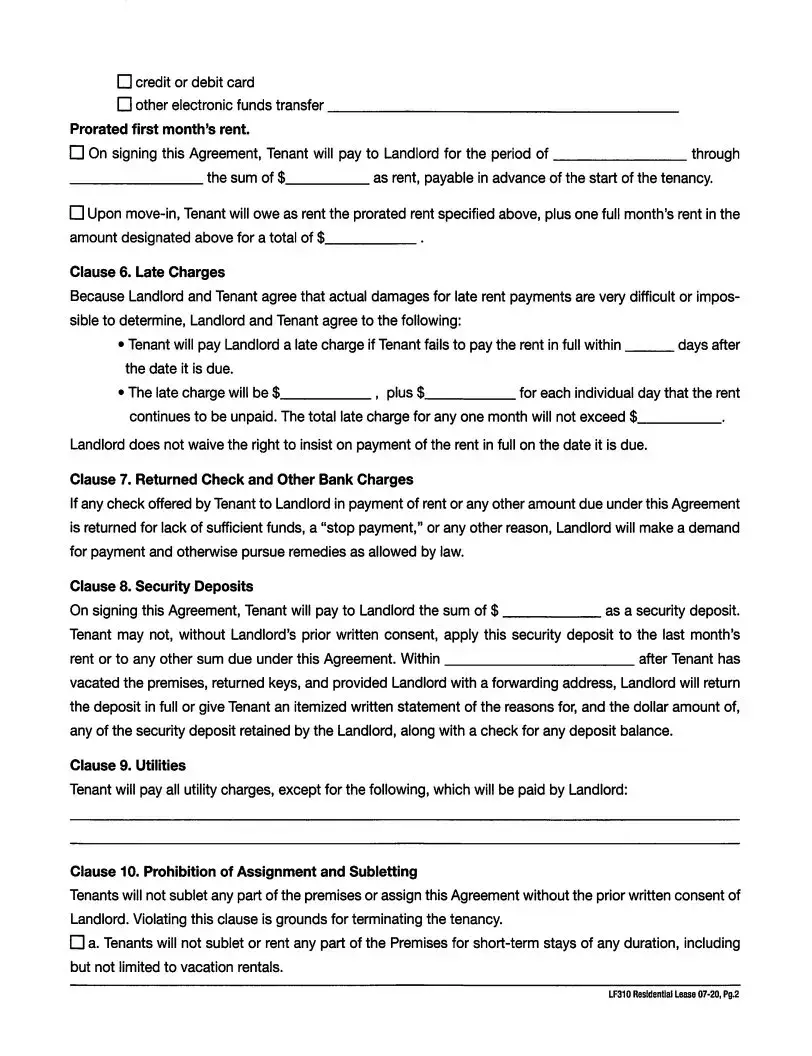When filling out the LF310 Residential Lease form, many individuals make common mistakes that can lead to complications later on. One frequent error is failing to properly identify the Landlord and Tenant. Both parties must clearly fill in their names in Clause 1. Omitting this information can create confusion about who is legally responsible under the lease.
Another mistake occurs in Clause 2, where the Premises must be accurately described. Leaving out the address or providing an incomplete description can result in disputes over the property being rented. It is essential to include the full address to avoid any misunderstandings.
Many tenants overlook the importance of specifying the term of the tenancy in Clause 4. Not indicating a start and end date can lead to uncertainty about when the lease begins and ends. This oversight can complicate issues related to rent payments and lease renewals.
In Clause 5, the method of payment should be clearly outlined. Tenants often forget to specify how rent will be paid, whether by mail, in person, or electronically. This can lead to delays and disputes over payment methods. Additionally, failing to state the amount of rent due can create confusion and potential legal issues.
Another common issue is not addressing late charges in Clause 6. Tenants should be aware of the specific late fee structure. Leaving this section blank or not understanding the penalties for late payments can lead to unexpected financial burdens.
Clause 8 involves the security deposit, and many tenants fail to specify the amount being paid. Not clearly stating this figure can lead to disputes over the return of the deposit after moving out. It’s also critical to understand that the security deposit cannot be used for the last month’s rent without written consent from the landlord.
Utilities are another area where mistakes can occur. In Clause 9, tenants must clearly outline which utilities they will be responsible for paying. Failing to specify this can lead to unexpected costs after moving in.
Lastly, tenants often disregard the prohibition of assignment and subletting in Clause 10. Many mistakenly believe they can sublet the property without the landlord's consent. Ignoring this clause can lead to immediate termination of the lease, resulting in significant consequences.
